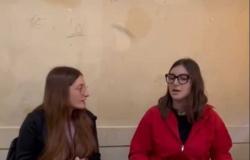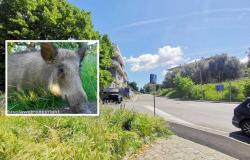«In fact, in 1276 the mortal remains of the Bishop of Canne were moved from Canne to Barletta. The Cannese clergy accused their Barletta counterparts of “theft” and sent a fiery letter appealing to Pope Innocent V. The Pontiff ordered an investigation entrusting it to the Bishop of Minervino who absolved (a little perhaps not) the Barletta clergy. I have no intention of arguing about it since many have spoken about it and some (unfortunately not all) even in a historically documented way. On the contrary, I would like to focus on the collateral “manifestations” that have very little (or nothing) to do with the religious event.
A few people, who have always been careful observers of the reality of Barletta, connoisseurs of the most ancient popular traditions and enthusiasts of history and art, have written articles for some years animating the asphyxiated cultural dialectic dedicated to little-known places, characters and stories of the city . And it is precisely by rereading them that we realize how, beyond the natural immutable historical data of the places described, the state of degradation and abandonment in which many of these find themselves is absolutely unchanged, indeed evidently worse.
So going back to those interventions, always current, still represents a civil testimony even before a cultural one, but above all a reminder of the need to intervene immediately. The articles therefore tell episodes, stories and places of a Barletta unknown to many and if known, forgotten, especially by the administrations. I often surprise myself by seeing how our city is full of individuals struggling with unthinkable initiatives that take away public money to “stage” paradoxical pseudo-historical reconstructions as an end in themselves which, to gain credibility, are accompanied by religious events adding insult to injury. Let them know that the historic medieval Fountain of San Ruggero (by the way!) in the most forgotten part of Canne della Battaglia, now close to complete annihilation, is in immediate and urgent need of intervention to save what remains of it? It would be good and right… or not?
So it is to be assumed that the individuals in question are busy with other matters. The “Historic” Barletta has an important artistic and cultural heritage and yet it is at the bottom of the rankings with regards to public investments in culture, the real one and not the sideshows at fairs; perhaps our city could be considered an open-air museum, given the wealth of works present and yet, we manage to stand out for its cultural nothingness. Again, there is no money for essential interventions but we expect to commit millions of euros to projects that will never be realized or if they are, our great-grandchildren will be able to see them. And not content with that, round tables, public debates and competitions of ideas are also organized on the theme of “The Barletta that will come” hoping to find among the many competent participants an alchemist who knows how to transform the four surviving axes into the “larger and more as beautiful as before.”
In short, in Barletta there is unfortunately little interest in valorising and protecting that cultural heritage which could, should, constitute the first economic resource. But, instead, we continue to discuss (my goodness, how boring!) about the fluff. Yet those places are the cultural sites of Barletta. Historical-cultural legacy of the colonization of various ethnic groups, diary of our history, answers to man’s atavistic questions (who are we? where do we come from?), our cultural heritage is much more than the set of places in the life of our thousand-year-old ancestors: it represents our precious heritage. Yet, today, those finds, those excavations, that archaeological heritage, that wealth too often boasted in propaganda declarations, is mostly forgotten, consigned to oblivion, forgotten by the institutions, unknown to the people of Barletta, unproductive. Which for a city with a tourist vocation is saying something!
“The future is already here” was the title of the conference held a century ago (it seems so much has passed but it’s only ten years) in the Red Room of the Castle, but those present, including the writer, as well as having had clear difficulty in perceiving where this future was located, they asked themselves and not so discreetly, whether they were also part of that oxymoron (but will it be or is it?) or as always happens, it will be the usual exclusive club which can only be accessed by invitation” .





